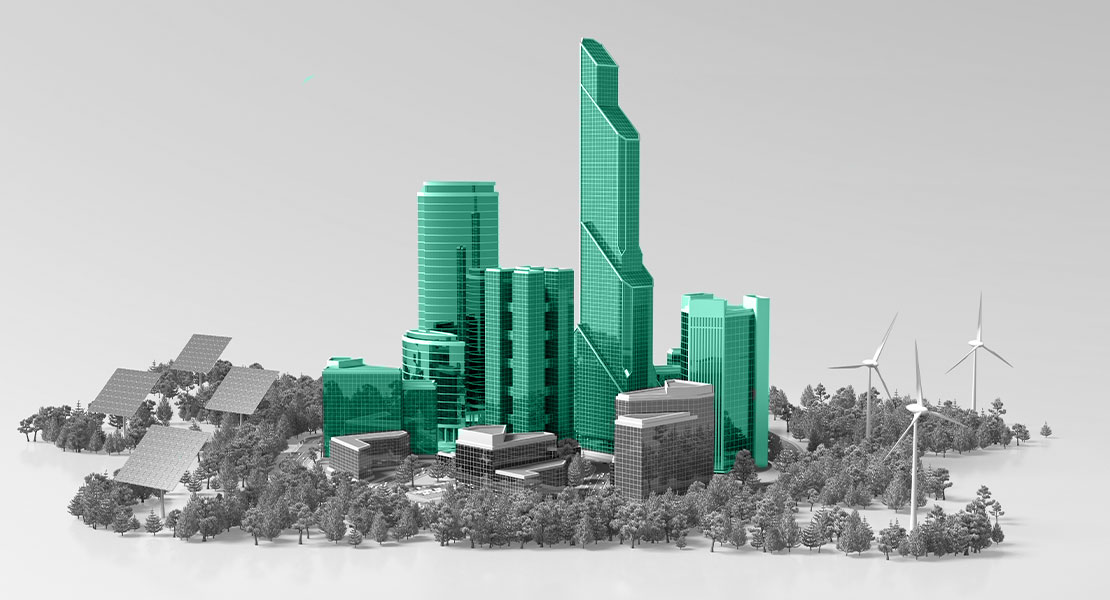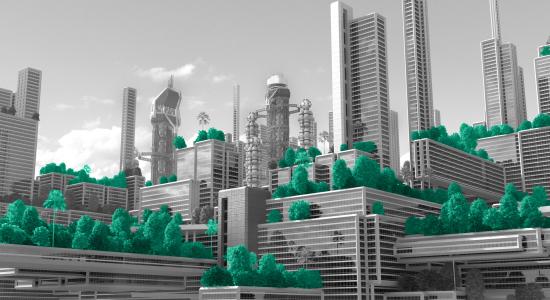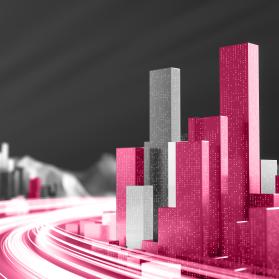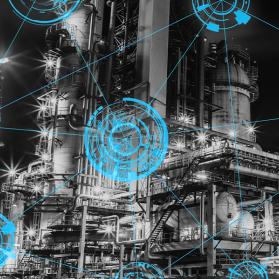The concept of a smart city stands for a liveable, clean and green city in which living together is more sustainable, efficient and innovative. The basis is an intelligent infrastructure that links a multitude of devices with each other and thus enables permanent interaction between citizens and the surrounding technologies.
Cities have a particularly high ecological footprint due to the high population density and limited space. Given the continued growth of world population and the trend towards urbanization, resource consumption in cities is increasing massively. With regard to sustainability management, they therefore have enormous potential.
However, at the same time, many cities also face a wide variety of challenges: overcrowded trains and traffic jams, pollution and rising energy costs are just a few examples. To address these issues, it is essential to find innovative solutions in the different areas of urban development.
Achim Berg, President of Bitkom:
"In Germany, we usually only associate smart cities and municipalities with the digitalisation of the administration. Around the world, smart cities are successfully demonstrating that digitalisation can do much more and, for example, help to solve ecological and economic problems of climate change. For example, e-buses, intermodal mobility and digitalised buildings in cities can reduce CO2 emissions".
Source (translated): https://www.bitkom.org/Presse/Presseinformation/Smart-City-Digitales-fuer-mehr-Nachhaltigkeit-und-Lebensqualitaet
Smart mobility and infrastructure
A sustainable city encourages citizens to reduce the use of their own car as much as possible and switch to public transportation or their bicycle instead. This will only work if the transport infrastructure is designed in a way that fosters car-free mobility, for example by expanding bicycle and pedestrian paths and through investments in public transportation. Furthermore, intelligent traffic control can be used to adjust not only the route but also the departure time of public transport according to the current traffic situation and the individual demand of the citizen.
Also sharing models contribute to intelligent traffic management. The sharing offer should mainly consist of electric transportation and, in addition to cars, should also include other vehicles such as bicycles or e-scooters. For this, it is essential to expand the infrastructure, especially the number of charging stations.
Another measure are sensors that can be used to adjust traffic light phases and thus reduce traffic jams. This shortens the overall travel time, which consequently reduces CO2 emissions and improves air quality. Smart parking concepts also help to reduce pollution by speeding up the search for parking space. The available parking spaces that are equipped with sensors can be displayed in an app, so unnecessary driving around can be avoided. This concept can then successively be extended by further functions, such as the integration of free electric charging stations in the future.
Besides passenger transport, delivery transportation plays a significant role, particularly in large cities. In order to make this more sustainable, micro depots and parcel stations can be used more frequently, fixed delivery parking zones can be defined, or a switch to bicycle logistics could be an option.
Energy management
Due to the high demand for energy and the limited space within a city, there are special requirements regarding the energy supply. So-called smart grids are an innovative and at the same time efficient solution. Smart grids are intelligent power grids that distribute energy efficiently.
In contrast to conventional energy grids, which are designed for a steady flow of electricity, smart grids coordinate the energy flow so that only a minimum of energy is lost. In order to do so, they keep track of power generation as well as the actual demand and store the surplus power, which can be released when necessary.
On the one hand, this is important because the increased use of renewable energies means that it is not possible to generate electricity at a constant rate, as it is the case with a coal-fired or nuclear power plant, and fluctuations must therefore be balanced out dynamically. On the other hand, electricity production is becoming more and more decentralized and increasingly consists of many smaller energy sources.
A smart grid can link the individual energy sources and enable a central control. To ensure that the intelligent energy supply works, there must be an exchange of information, which is possible with intelligent metering systems, the so-called "smart meter". Smart meters register electricity consumption and enable data-based control.
Example Dubai
One city that shows how this can be done is Dubai with its community "The Sustainable City". All buildings are made of environmentally friendly building materials and have solar cells on the roofs to ensure a green electricity supply, and even the wastewater is recycled. The center of the sustainable community is an approximately 4 km long green strip with playgrounds, water areas and greenhouses. It also includes a shopping center, restaurants, clinics, office buildings and other facilities. Most of the neighborhood is a car-free zone. Residents can park their cars on the outskirts of the community under carports. To get around, e-buggies, bicycles and scooters are available to residents.
Smart metering systems therefore form the basis for the digital infrastructure of a sustainable energy supply. Another approach in the area of infrastructure is smart lighting: here, in addition to the use of LED lights, all lighting can be controlled in such a way that streetlights only turn on when a person on the road approaches, instead of predefined time slots. In this way, energy can be saved, and also other functions can be added to the intelligent streetlamps, for example, they can be used simultaneously as e-charging points or support sensor-based services such as the measurement of noise, CO2 or temperature.
Smart buildings
Smart buildings are characterized by their low emission levels. In the context of a smart city this applies in particular to buildings of the urban community such as city halls, schools, hospitals or cultural facilities. Good thermal insulation in combination with intelligent heating and air-conditioning systems can significantly reduce energy consumption. Sensors on windows, doors or walls detect if people are in the room and adjust the room temperature accordingly. Lighting in smart buildings is also adapted to actual needs, and if photovoltaic systems are installed on public buildings such as schools or community centers, or if the roofs are planted with vegetation, cities come much closer to achieving their sustainability goals.
Complementary measures to digital solutions
Besides the smart digital solutions, traditional green areas are not to be neglected in a sustainable smart city concept. Available spaces should be used in the best possible way; these can be free properties, but also roofs or buildings. This creates new living and leisure areas, cleans the air and enhances the location. The reduction of waste in cities is also an important factor that supports the general sustainability goals and at the same time increases the quality of life of the citizens.
All these measures help to avoid noise, emissions and the production of CO2 and contribute to a minimal impact on the environment. It also shows that when cities focus on environmental protection, the overall environmental situation of the city improves and the quality of life of the citizens increases. As a result, smart cities gain a location advantage for both citizens and businesses and become more than just a place to live. In addition, many of these initiatives are already funded by European or German authorities, so that projects can be subsidized or cities can receive compensation per saved ton of CO2.









